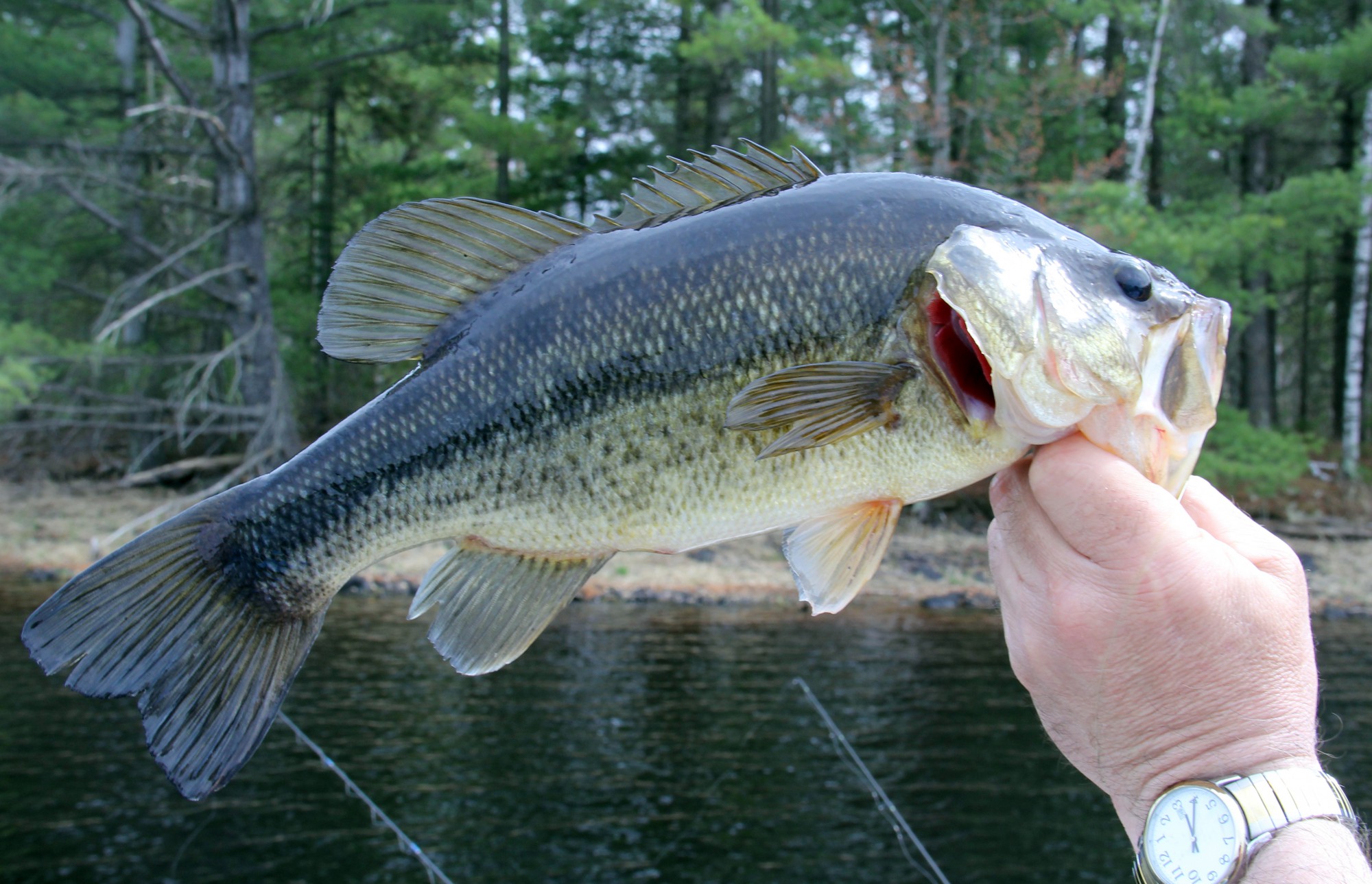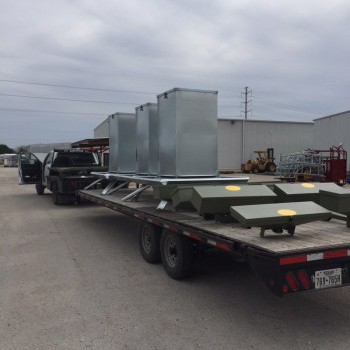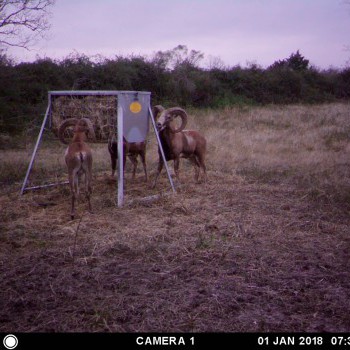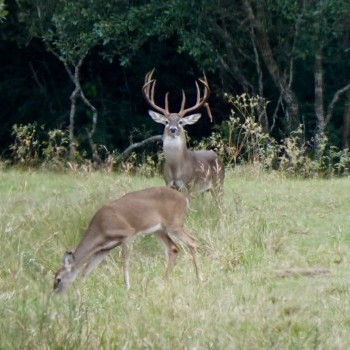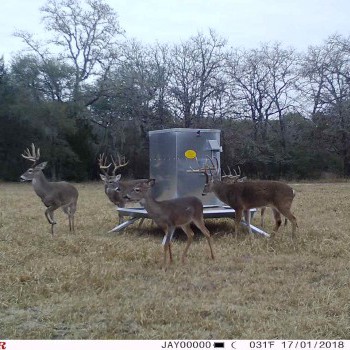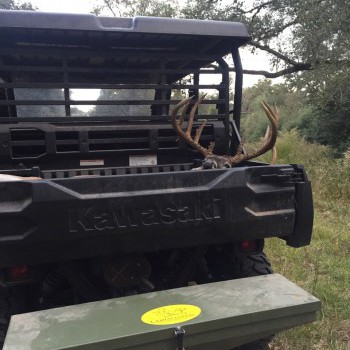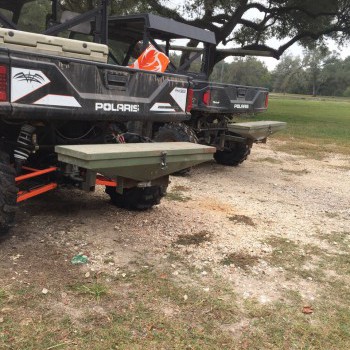Stocking New Ponds With Fish Is A Process
COLLEGE STATION – Spring is a good time for landowners with new ponds to begin stocking fish but a planned approach is recommended, according to Texas A&M AgriLife Extension fisheries specialist Todd Sink.
“A lot of people think you just put fish in a pond and it is stocked and will result in a good fish population,” said Sink, who is based in College Station. “But you must first assure the water chemistry is correct to adequately support fish, create a strong pond food-chain, stock the proper baitfish to sportfish numbers, and finally there is a particular stocking order that must be followed.”
The first step is to assure the environment is suitable for where phytoplankton, prey organisms and fish at all levels of the food chain can thrive, Sink said. Phytoplankton are the single-celled microscopic algae that give water a greenish tint and are the basis of the entire pond’s food-chain. Sink recommends taking a water sample for analyses to determine the water chemistry of the pond. This is especially important in East Texas, he said, because the soil is typically acidic which leads to low-alkalinity, acidic waters.
Landowners should try to create an alkalinity of between 50-150 parts per million and a pH of 6-9. Doing so provides the best environment for the pond’s food chain, he said. Crushed agricultural limestone, hydrated lime, quicklime, or slaked lime can be added to low-alkalinity or low pH ponds to create a more productive environment for fish and their food prior to stocking. Hydrated lime, quicklime, or slaked lime cannot be added to a pond with fish because the rapid pH change can cause a fish kill.
Landowners can add crushed agricultural limestone, or agricultural lime, to correct alkalinity or pH issues in ponds that already contain fish with no adverse effects to the fish populations, because it creates a very gradual shift in pH, he said. Sink also recommends a fertilization program be implemented if maximizing fish production is the goal. Most ponds benefit from adding 5-8 pounds of liquid or powdered, not pelleted, phosphorus per-acre. This practice will create a phytoplankton bloom, which creates food for baitfish, crawfish, insects, and other organisms at the base of the sportfish food chain, as well as for larval sportfish themselves.
The pond “won’t produce as much food as it could if unfertilized,” he said. “Creating a good basis for the pond’s food chain through fertilization programs can produce four to six times more fish from the same body of water.”
Fertilization can also help to limit the establishment of nuisance rooted vegetation by blocking sunlight to the bottom of the pond, he said.
After creating a good environment, Sink said owners should stock ponds in spring or early summer with 5-15 pounds of fathead minnows per acre, which are easy-to-capture baitfish that will spawn and create a good food source for larger baitfish and sportfish populations so they are established when stocked.
In the fall, Sink said the pond should be stocked with 500 bluegill or 400 bluegill and 100 redear sunfish per acre. Redear can grow substantially larger than bluegill, but the two species do not compete for food. By stocking the two species in combination, landowners end up with more fish in the pond because they are not competing for the same resources, which means the bass have more available baitfish and anglers have another species to catch, he said.
Bluegill and redear are good baitfish for bass and catfish, Sink said. When stocked in the fall, they will continue to grow throughout the fall, winter and spring so they are ready to spawn and provide sufficient prey for bass and catfish. Bluegill and redear are typically sold as 1-3 inch stockers while bass are sold at 2-4 inch and catfish 1-6 inch.
If landowners stock bass or catfish at the same time as the bluegill and redear are stocked, the bass and catfish eat the small sunfish before they ever have a chance to spawn, creating too many predatory fish and too few forage fish, leading to stunted bass and catfish populations.
“The fish population in the pond will be off to a bad start,” he said. Bass spawn in March and April and fingerlings will be ready to stock by May or June. Catfish spawn in May and June and will be ready to stock in July or August, but fingerlings are available throughout the year due to fish production management, although size varies with time of year.
Ponds should be stocked with one largemouth bass for every ten sunfish stocked, so for the scenario above where 500 sunfish are stocked, 50 largemouth bass per acre can be stocked. Up to 50 channel or blue catfish per acre can be stocked, or up to 100 per acre with fertilization and supplemental feeding two to three times a week. Sink said catfish can be added any time after bass are stocked.
But Sink said owners should consider whether they will fish for catfish and must plan to remove larger catfish to protect bluegill, redear and smaller bass populations.
“A 2-pound catfish is a good predator and can feed on a quarter to half pound bass and 8-9 inch bluegill so they should be thinned out to keep their sizes small,” he said.
If the owner does not plan to fish for catfish or remove most of them by the time they reach 2 pounds, they should not stock catfish in their pond and focus more on bass, bluegill, and redear sunfish.
Once stocked, the pond should be ready for quality fishing in three years, Sink said. Sink said owners could speed up the process a bit by adding more minnows, bluegill and redear during the first two years, but that stocking more minnows or baitfish is not necessary. Stocking additional bass into the pond is never needed, unless there is a fish kill, as bass over-populate in most ponds.
The key to managing good fish populations, and to growing big bass, relies on harvest of bass from ponds starting the third year after stocking. Most ponds require a minimum of 10 pounds of 6-10 inch largemouth bass be harvested per-acre per-year to support a healthy fish population. If the owner wants to grow trophy bass, they may need to harvest 25 pounds or more of 6-14 inch largemouth bass per-acre per-year to free up limited food resources so that remaining bass can grow fast or large.
If owners want to catch more large bass or are catching too many half to 2-pound bass, the answer is not to stock more bass because it would make the issue worse. Instead, work on building the food-chain and harvesting more bass to free up food resources so remaining bass can grow larger faster.
Owners can also add structures to ponds to provide cover for fish, but they typically are more beneficial to anglers because fish congregate around them and therefore they know where to find the fish, Sink said. Sink recommends the use of natural materials, such as wood and rock because tires and plastic pipe are petrochemical-based products and degrade over time introducing those chemicals to the water and the fish.
Also, algae and other food items do not grow well on plastic, he said.
“There’s nothing wrong with (structures) but fish don’t have to have them,” he said. Aquatic vegetation can provide good cover for fish, but is in no way necessary or vital to a good fishery and should be managed. Sink said vegetation should be limited to 10-15 percent of the pond’s total bottom area. Vegetation should be managed if the coverage areas exceeds 20 percent, because fish kills caused by low-dissolved oxygen from excess vegetation can occur, he said.
Sink said aerators can be beneficial to many aspects of the pond but are not required. Aerators that mix water at all depths should be used when possible over surface aerators, he said.
Crappie are not recommended for stock ponds less than 20 acres because they are prolific breeders, Sink said. They are extremely difficult to manage because predators and anglers can’t keep up with crappie spawns and ponds are eventually overrun.
For more information from the Texas A&M AgriLife Extension fisheries, go to http://fisheries.tamu.edu/.
For access to a 2015 Webinar about comprehensive stocking strategies and tips from Sink go to http://bit.ly/1VBHTyN.
By: Adam Russell, 903-834-6191, adam.russell@ag.tamu.edu Contact: Todd Sink, 979-845-7471, Todd.Sink@tamu.edu
Original article here: https://today.agrilife.org/2016/04/19/stocking-new-ponds-with-fish-is-a-process/
*****
Lamco Feeders has been manufacturing fish feeders since 1985. Our fish feeders offer fish and wildlife enthusiasts a quality and reliable product they can depend on. Whether raising and feeding largemouth bass, catfish, bluegill, or bait fish, Lamco Feeders offer the best solution for fish feeders.

